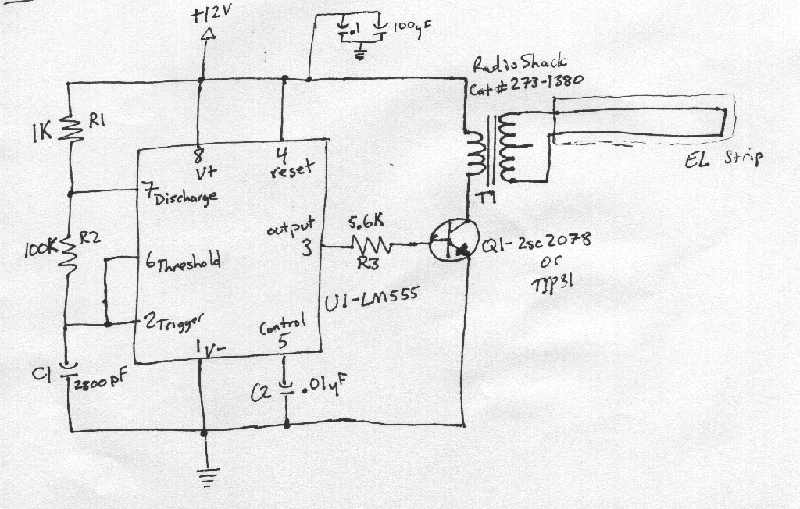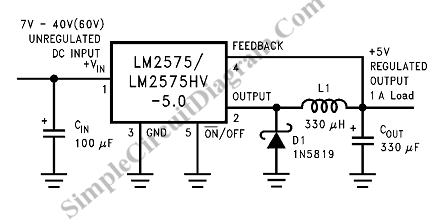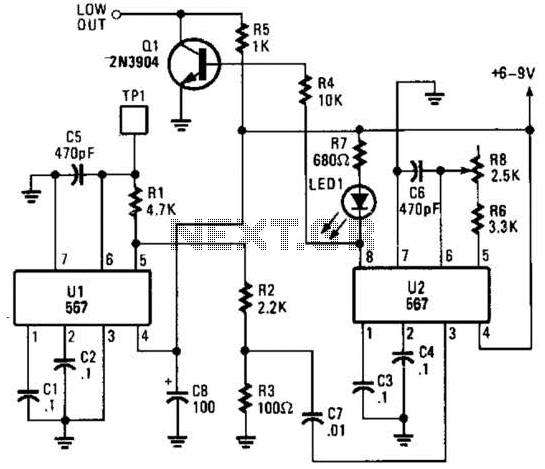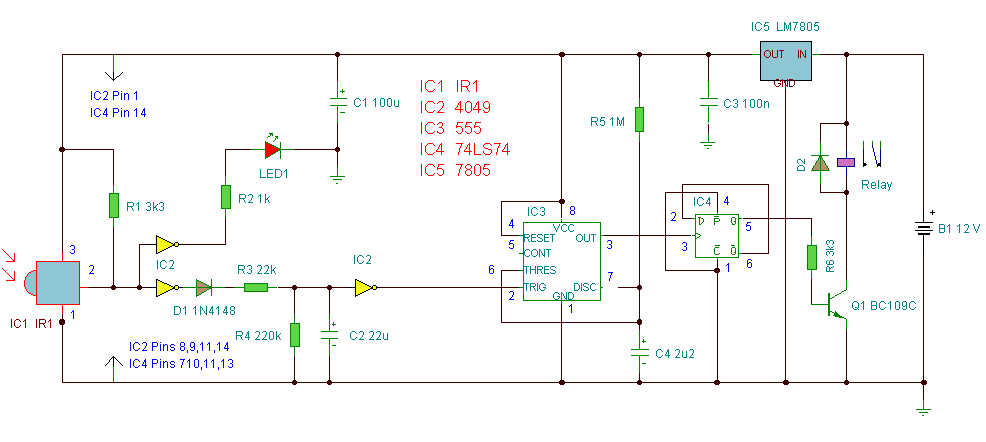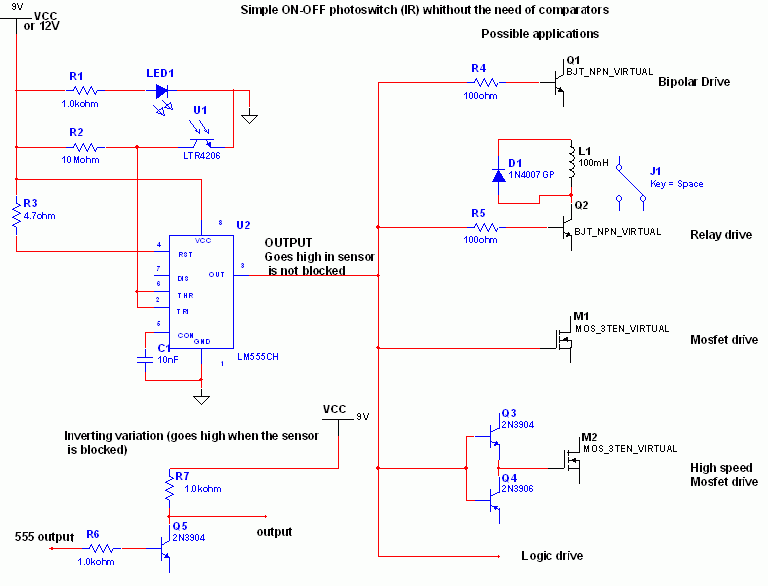
Touch Switch Monostable/Timer with 555 IC
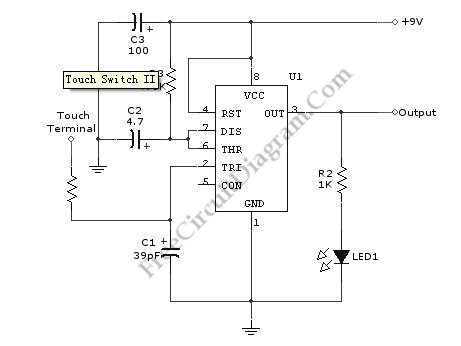
Utilizing the specified values depicted in the schematic diagram, this circuit features a timed ON period of 4 seconds. The ON time is governed by the values of capacitor C2 and resistor R3; increasing either C2 or R3 will extend the ON duration, while decreasing their values will shorten the ON time. A schematic diagram of a touch switch circuit is presented below. This circuit consists of various components.
The touch switch circuit operates based on a timing mechanism that leverages the charging and discharging characteristics of capacitor C2 in conjunction with the resistance offered by R3. The circuit typically includes a power source, a microcontroller or a timer IC, a touch-sensitive input, C2, R3, and an output device such as an LED or relay.
When the touch switch is activated, the capacitor C2 begins to charge through resistor R3. The time constant of the RC charging circuit, defined as τ = R3 * C2, determines the duration for which the output remains active. The output will remain in the ON state for a period proportional to this time constant.
For practical implementation, the choice of capacitor and resistor values should consider the desired ON duration and the overall circuit response time. For instance, if a longer ON time is required, selecting a larger capacitor or a higher resistance value will achieve this. Conversely, a smaller capacitor or resistor will reduce the ON time.
It is also essential to consider the input characteristics of the touch switch, which may involve additional components like a pull-down resistor to ensure stable operation and prevent false triggering. The output stage may include a transistor or a relay to control higher power loads, providing isolation between the low-power control circuit and the load.
In conclusion, the touch switch circuit is a versatile design that can be adapted for various applications by adjusting the timing components. Proper selection of C2 and R3 is crucial for achieving the desired operational characteristics.Using the given values as shown in the schematic diagram, this circuit has timed ON period of 4 seconds. The value of C2 and R3 determines the ON time, increasing the value of C2 or R3 will increase the ON time.
The ON time is decreased if the value of C2 or R3 is decreased. A schematic diagram of a touch switch circuit is shown below. This circuit consist.. 🔗 External reference
The touch switch circuit operates based on a timing mechanism that leverages the charging and discharging characteristics of capacitor C2 in conjunction with the resistance offered by R3. The circuit typically includes a power source, a microcontroller or a timer IC, a touch-sensitive input, C2, R3, and an output device such as an LED or relay.
When the touch switch is activated, the capacitor C2 begins to charge through resistor R3. The time constant of the RC charging circuit, defined as τ = R3 * C2, determines the duration for which the output remains active. The output will remain in the ON state for a period proportional to this time constant.
For practical implementation, the choice of capacitor and resistor values should consider the desired ON duration and the overall circuit response time. For instance, if a longer ON time is required, selecting a larger capacitor or a higher resistance value will achieve this. Conversely, a smaller capacitor or resistor will reduce the ON time.
It is also essential to consider the input characteristics of the touch switch, which may involve additional components like a pull-down resistor to ensure stable operation and prevent false triggering. The output stage may include a transistor or a relay to control higher power loads, providing isolation between the low-power control circuit and the load.
In conclusion, the touch switch circuit is a versatile design that can be adapted for various applications by adjusting the timing components. Proper selection of C2 and R3 is crucial for achieving the desired operational characteristics.Using the given values as shown in the schematic diagram, this circuit has timed ON period of 4 seconds. The value of C2 and R3 determines the ON time, increasing the value of C2 or R3 will increase the ON time.
The ON time is decreased if the value of C2 or R3 is decreased. A schematic diagram of a touch switch circuit is shown below. This circuit consist.. 🔗 External reference
